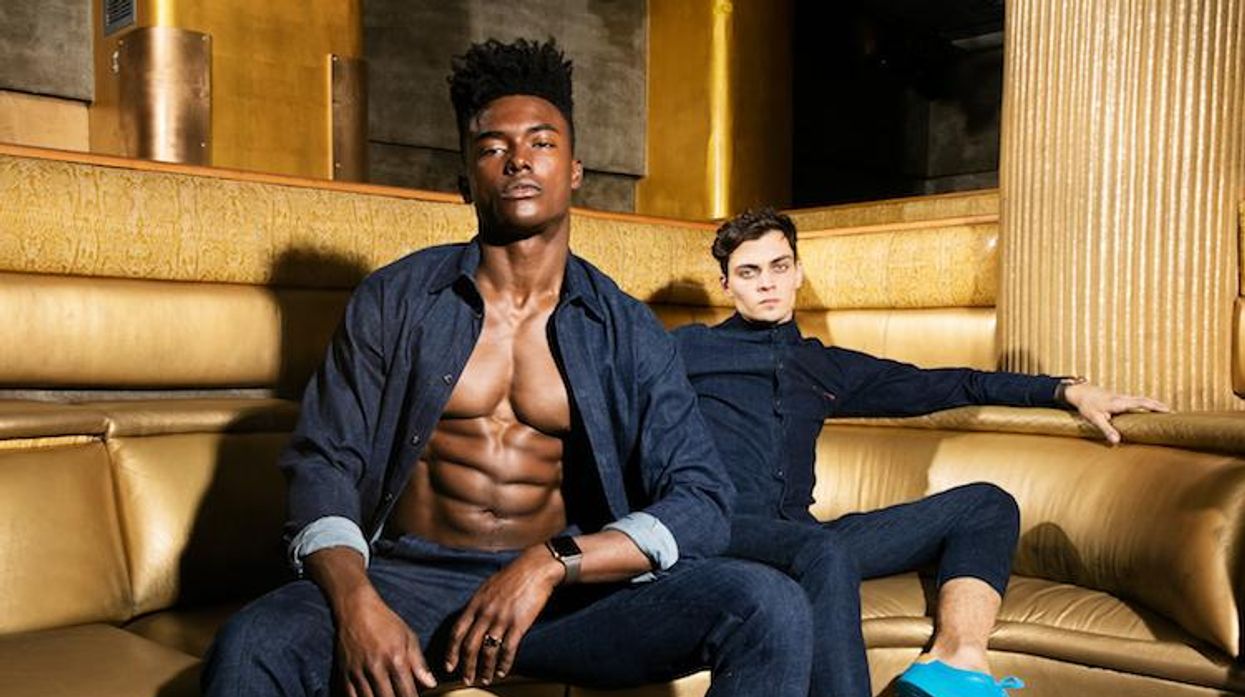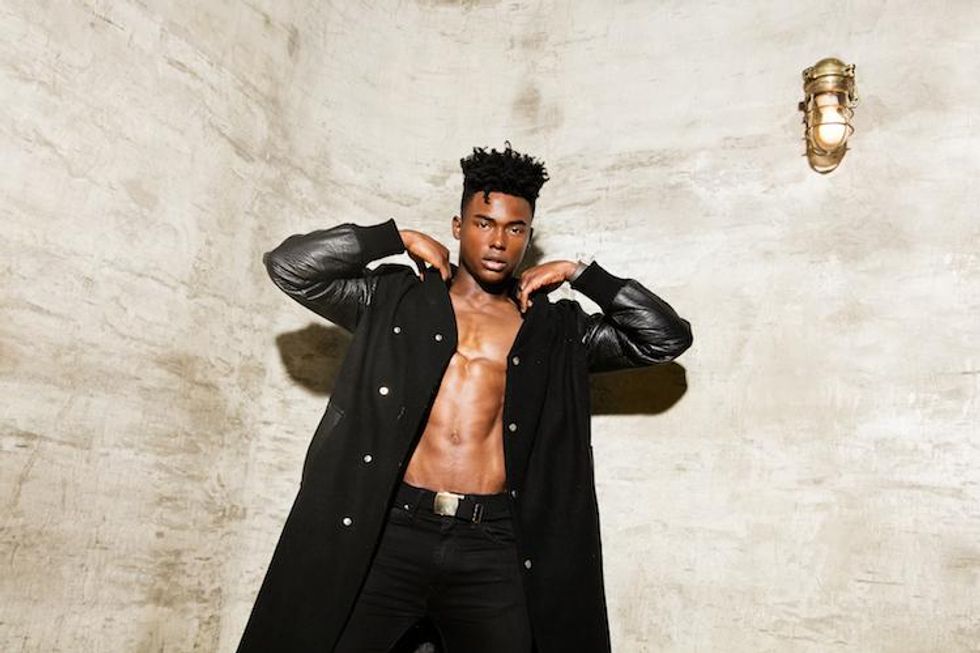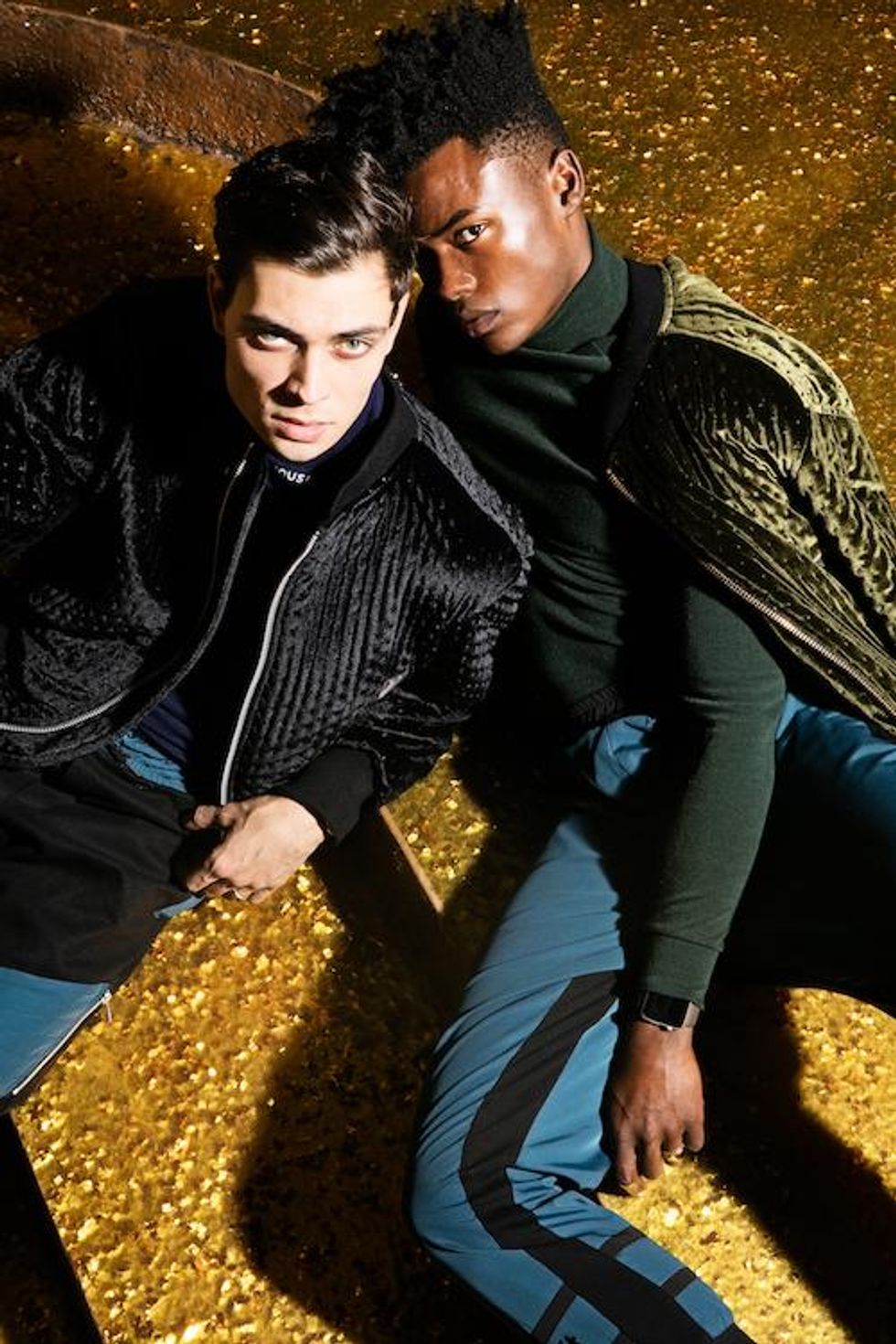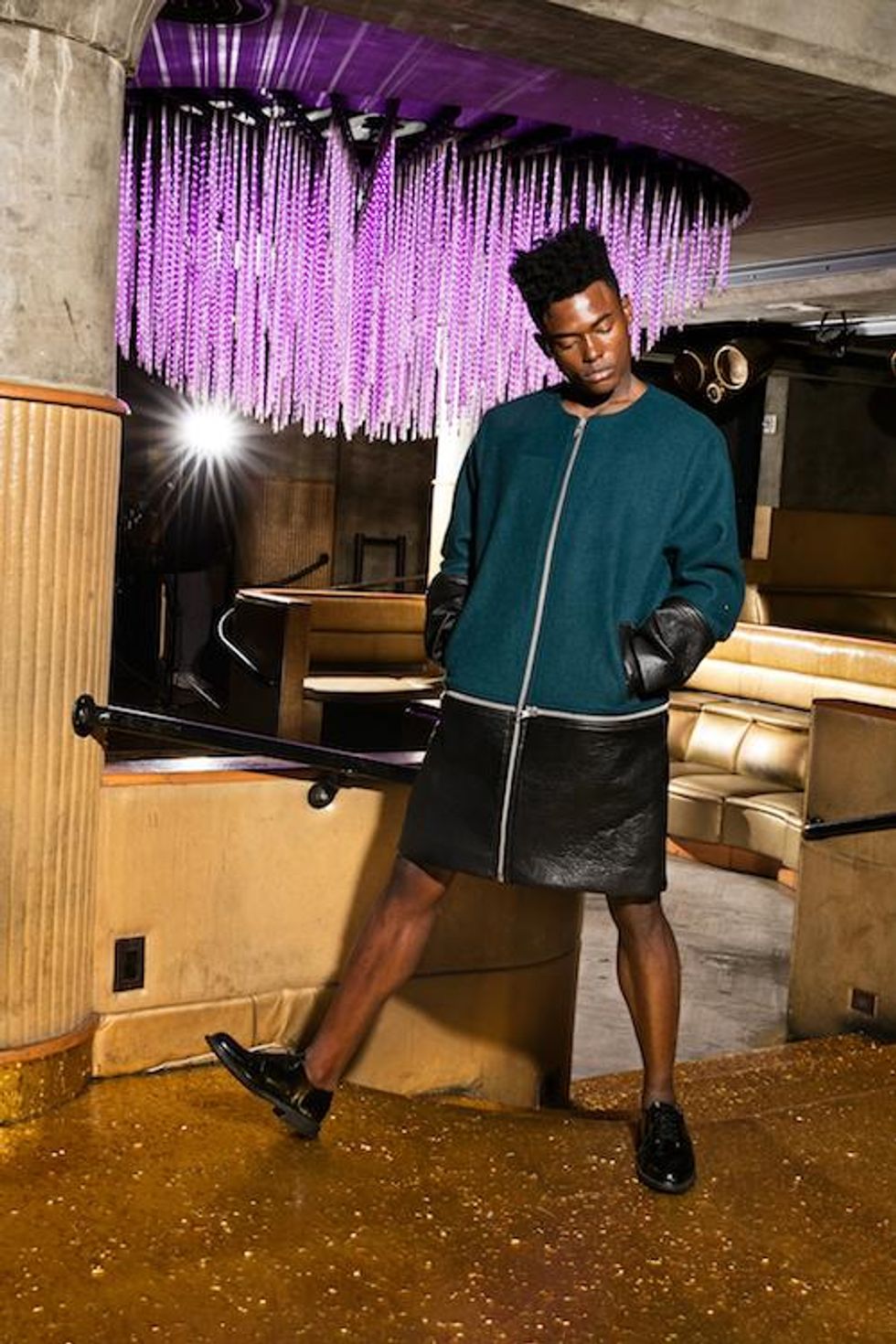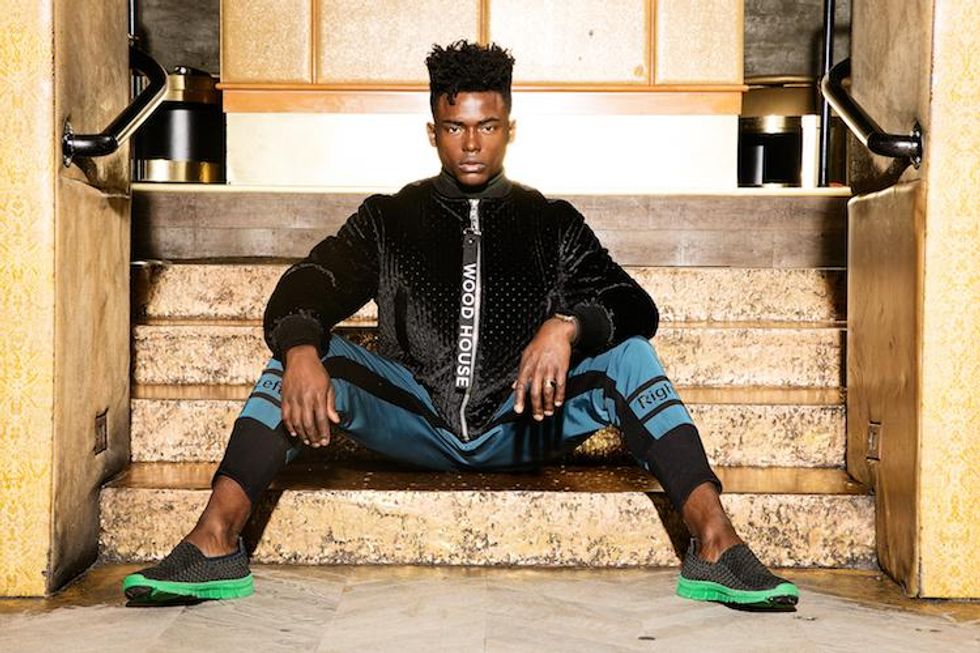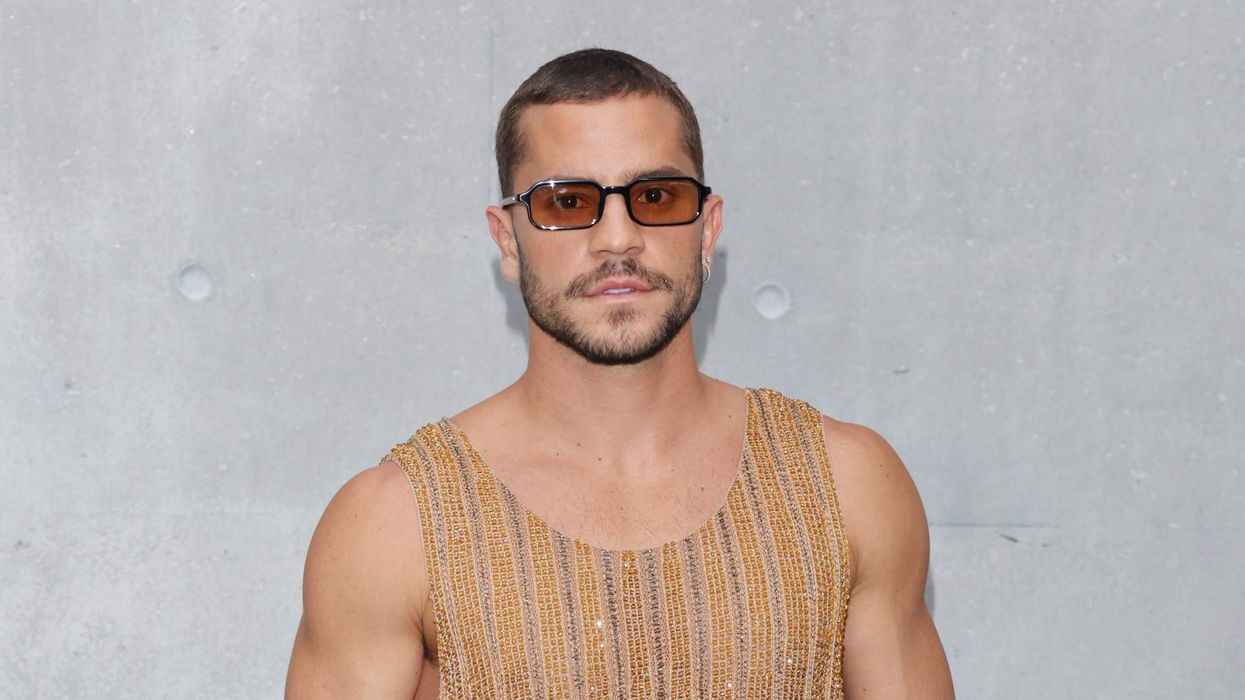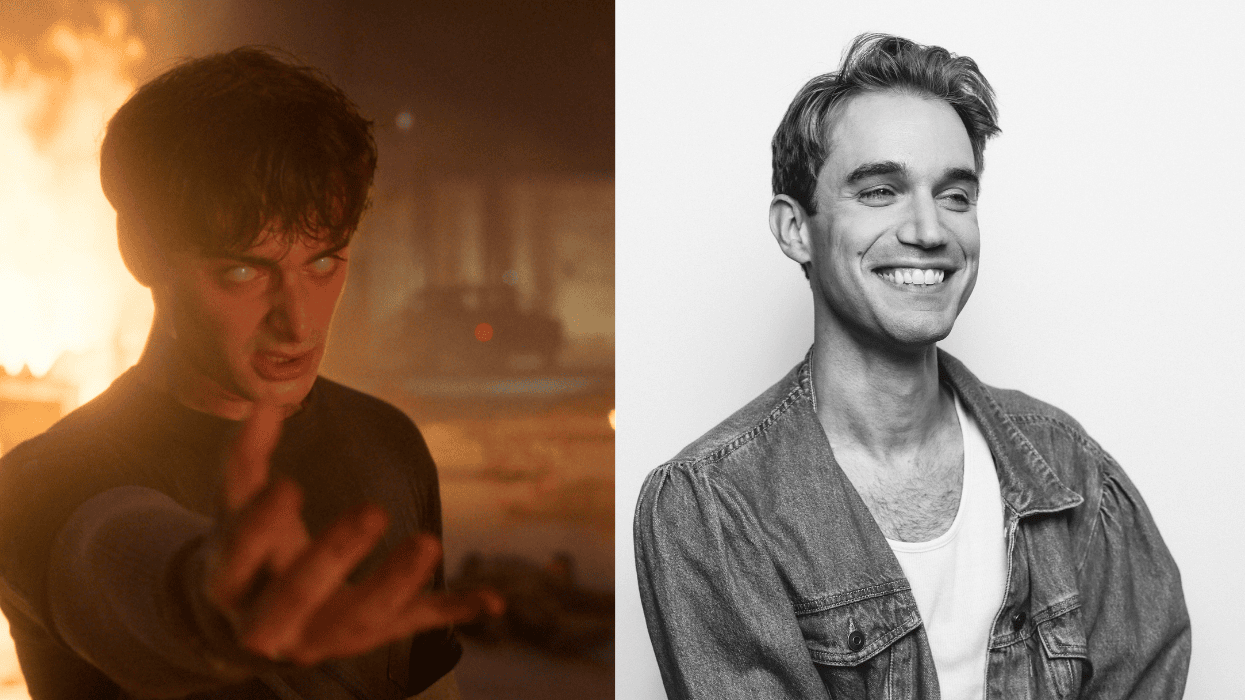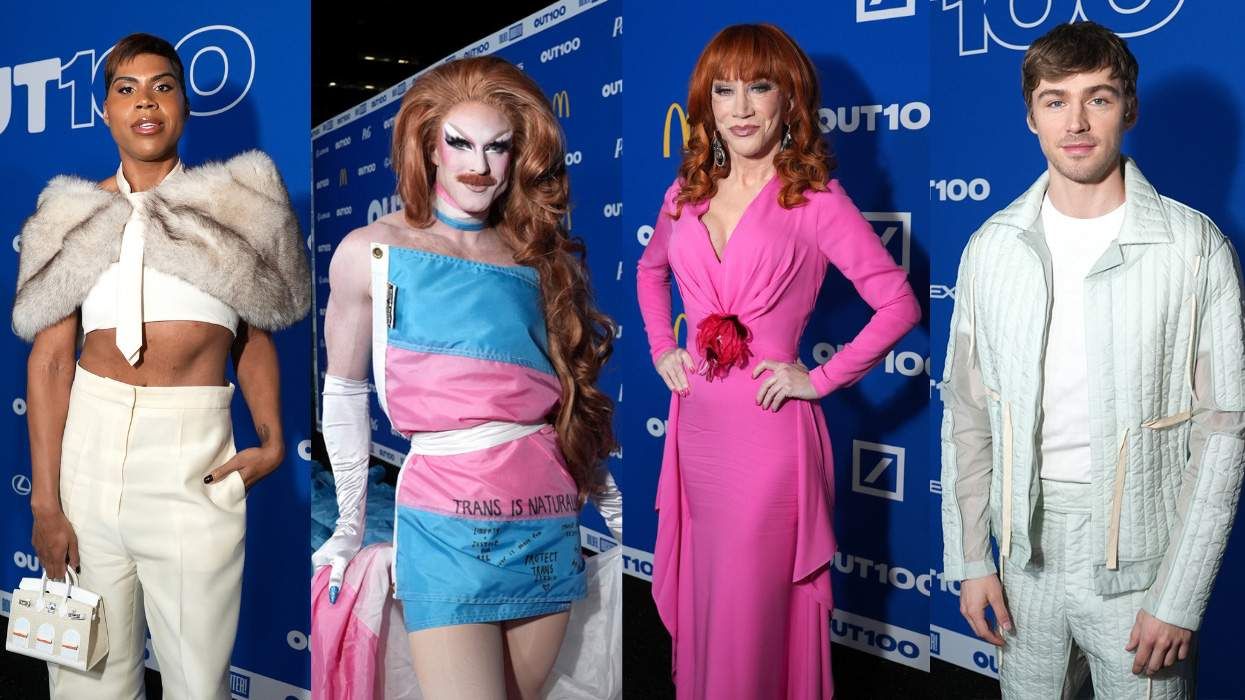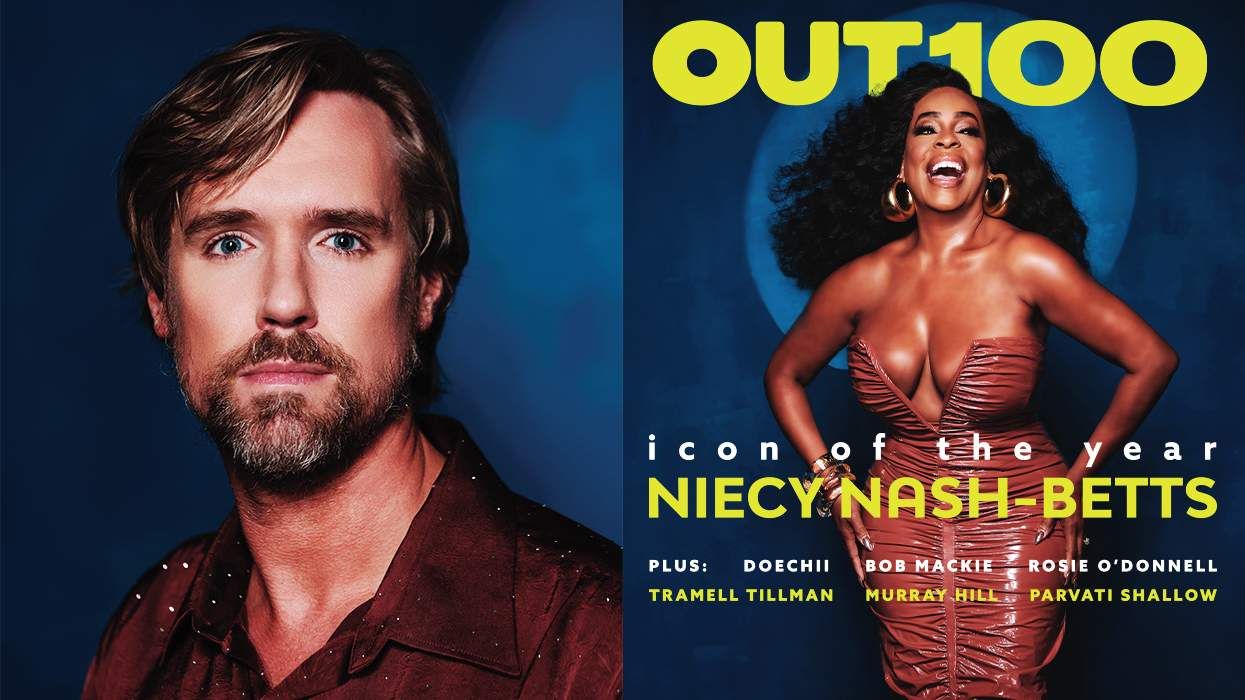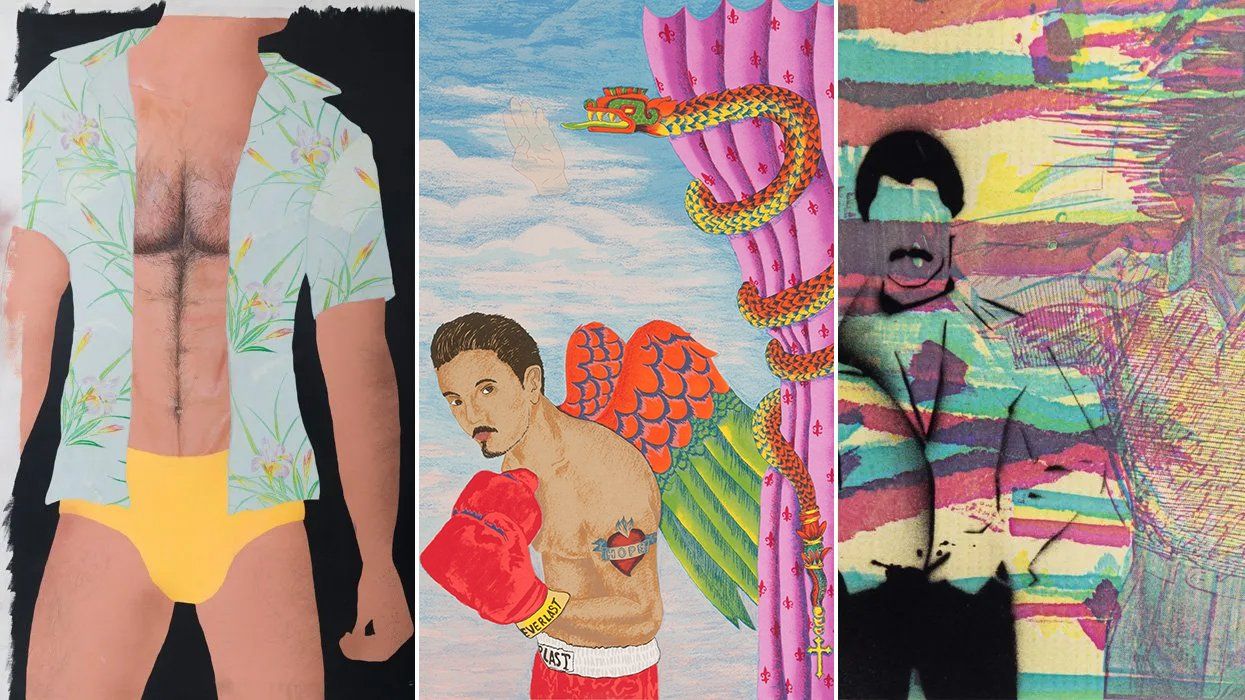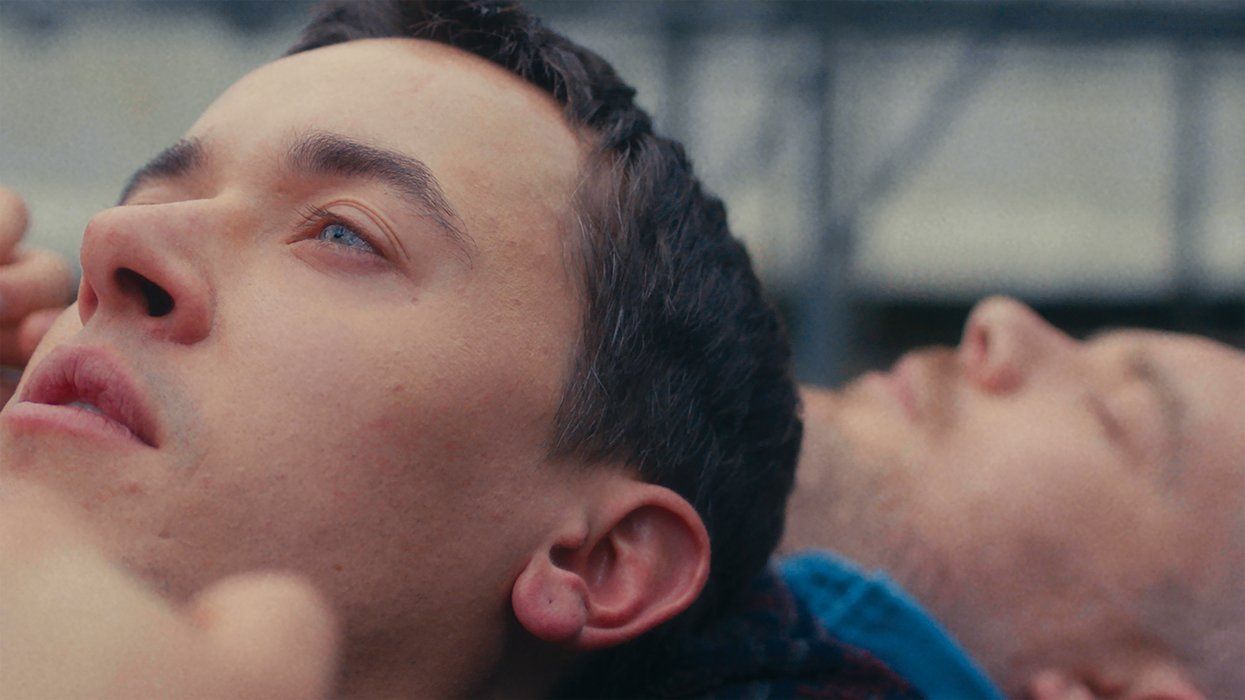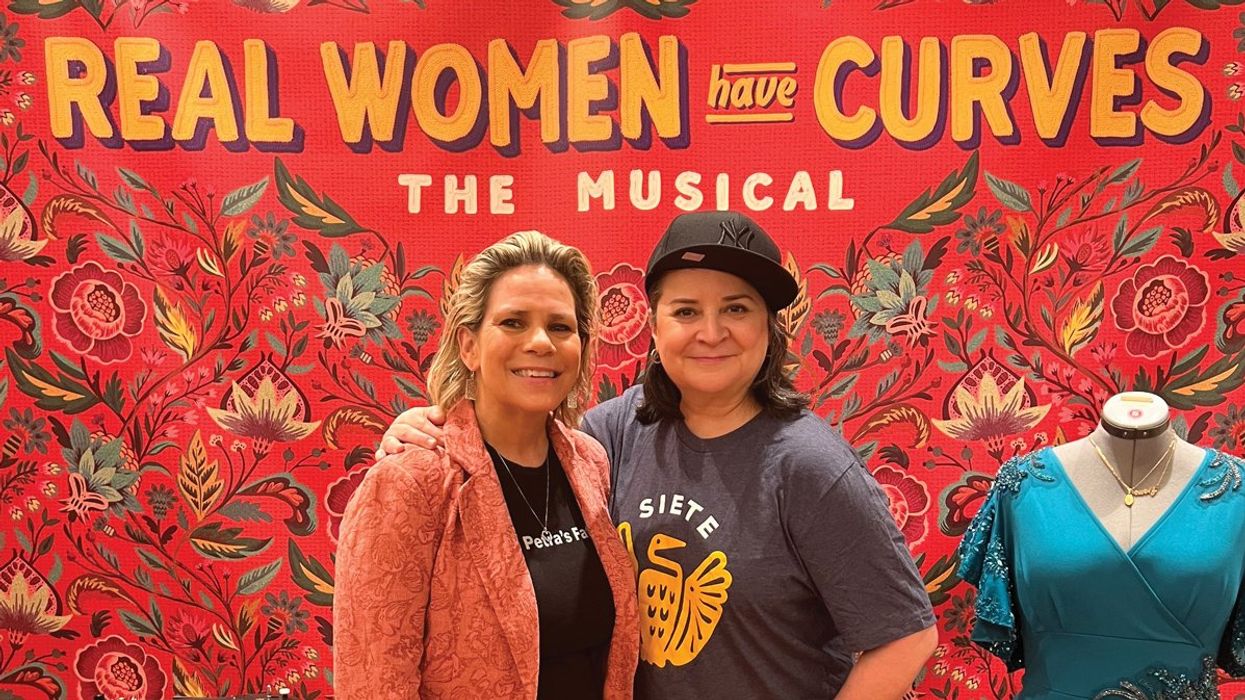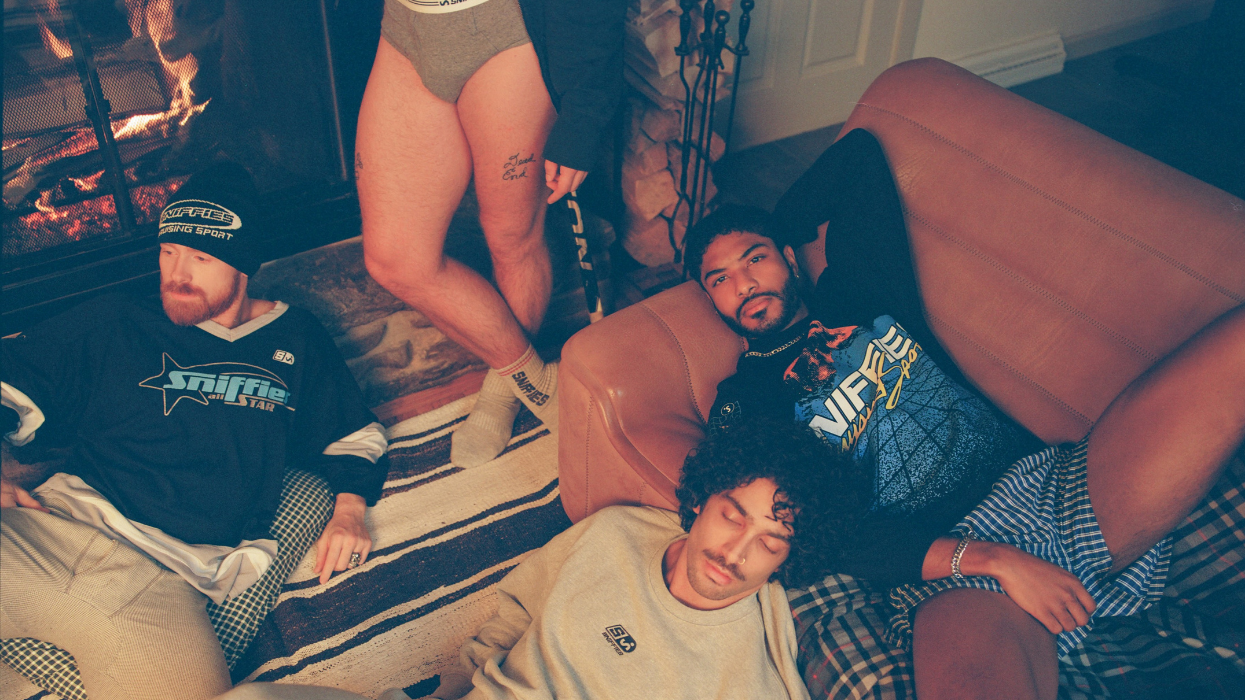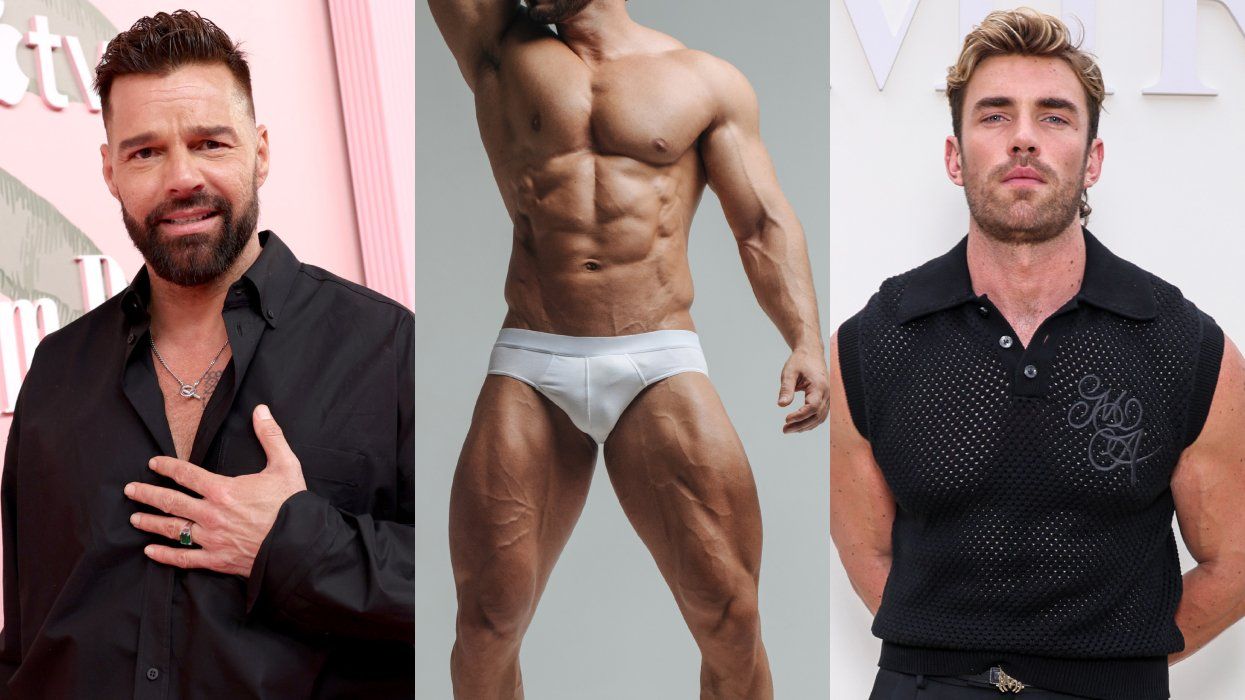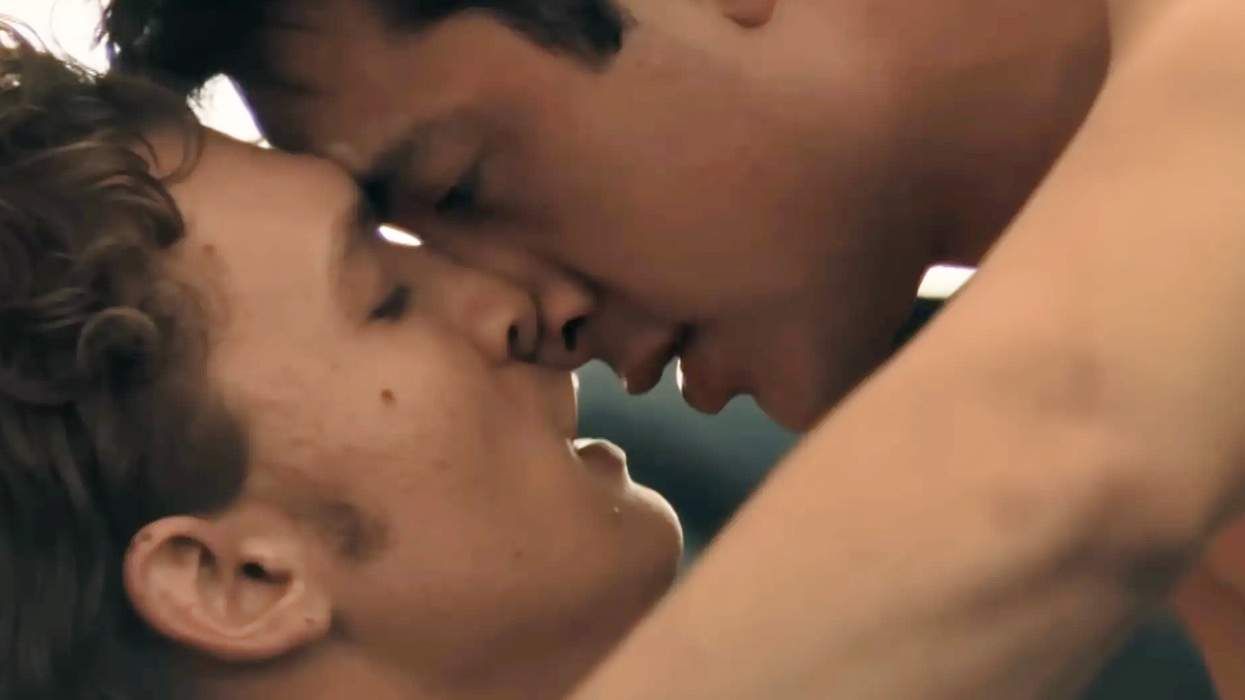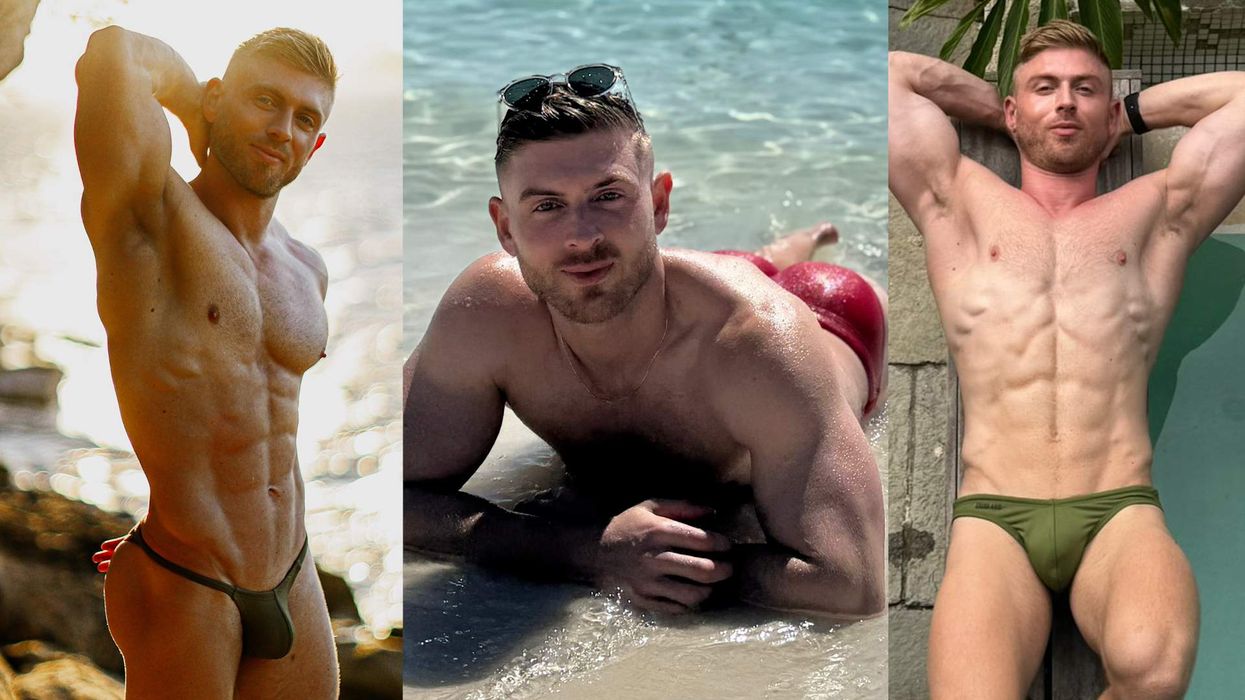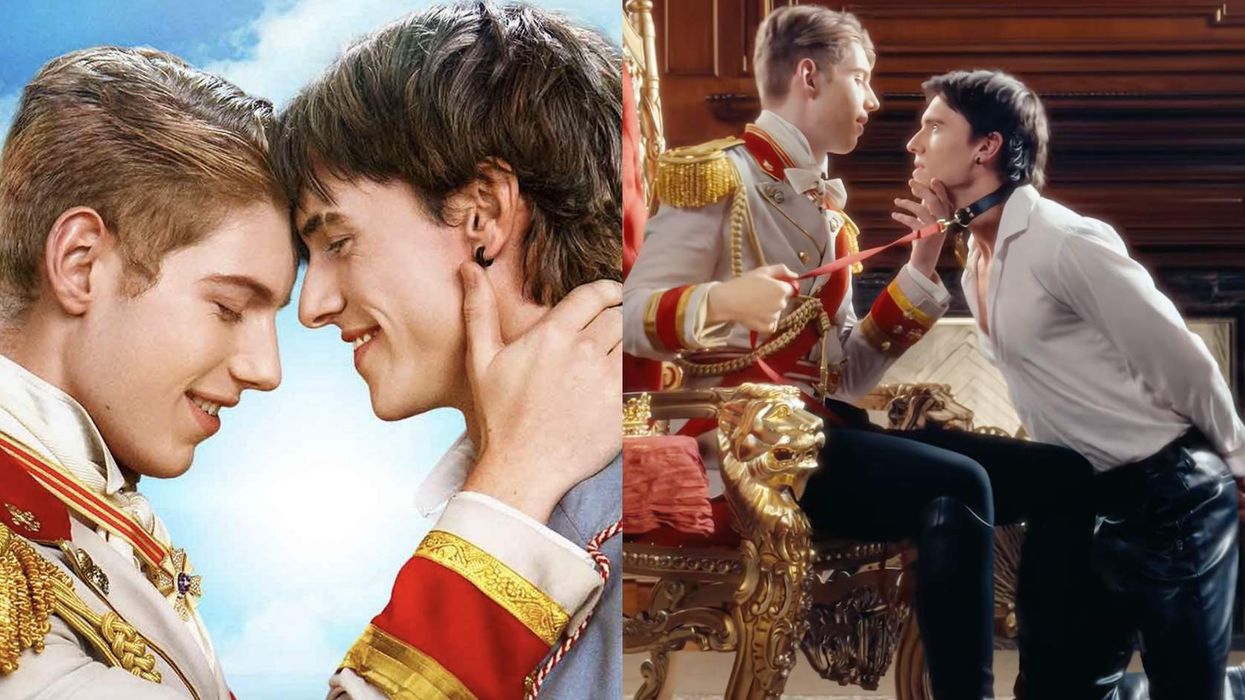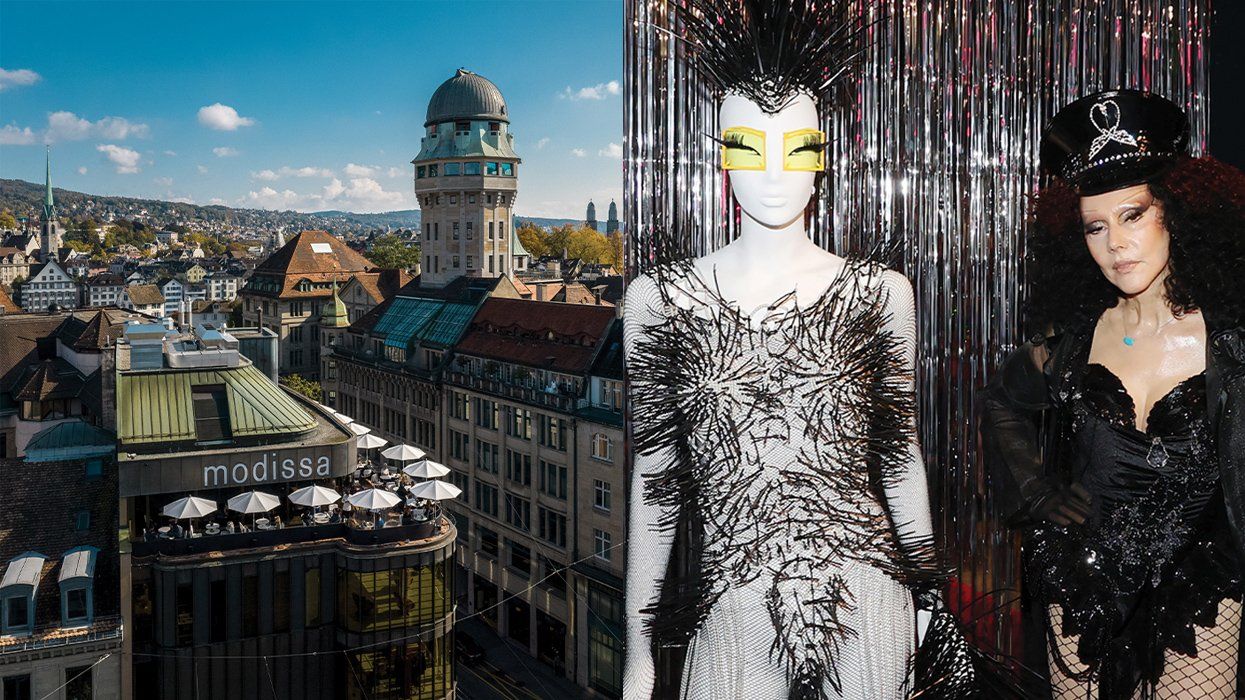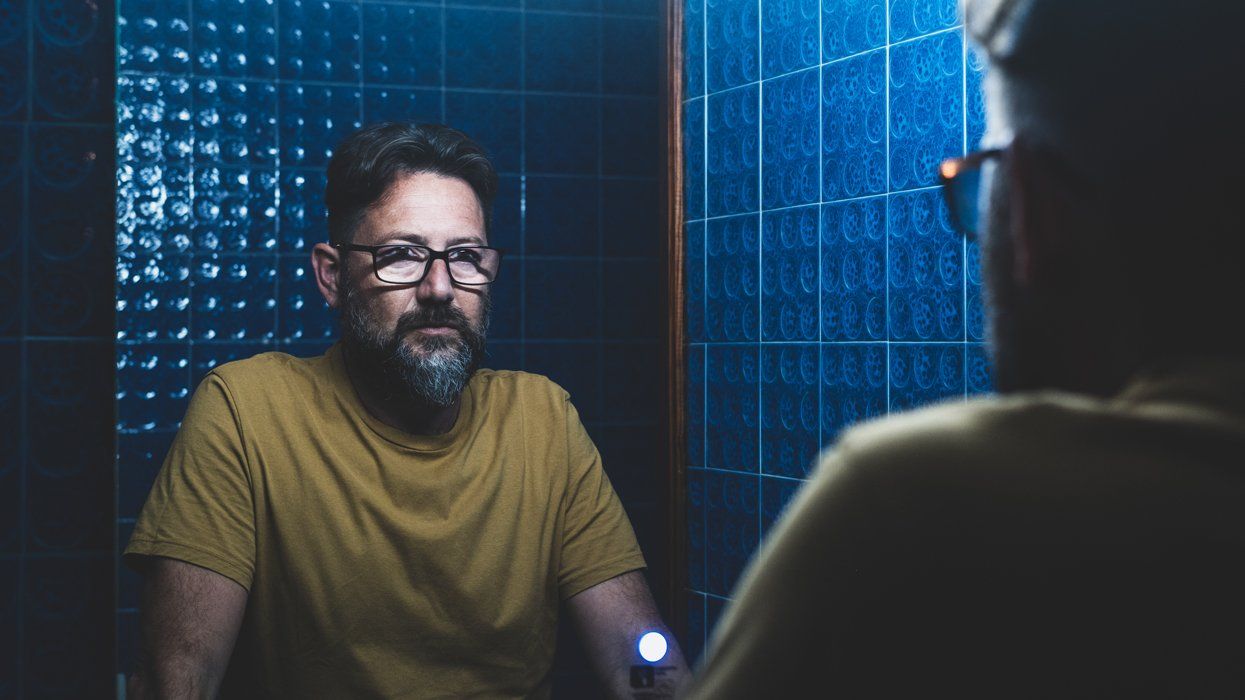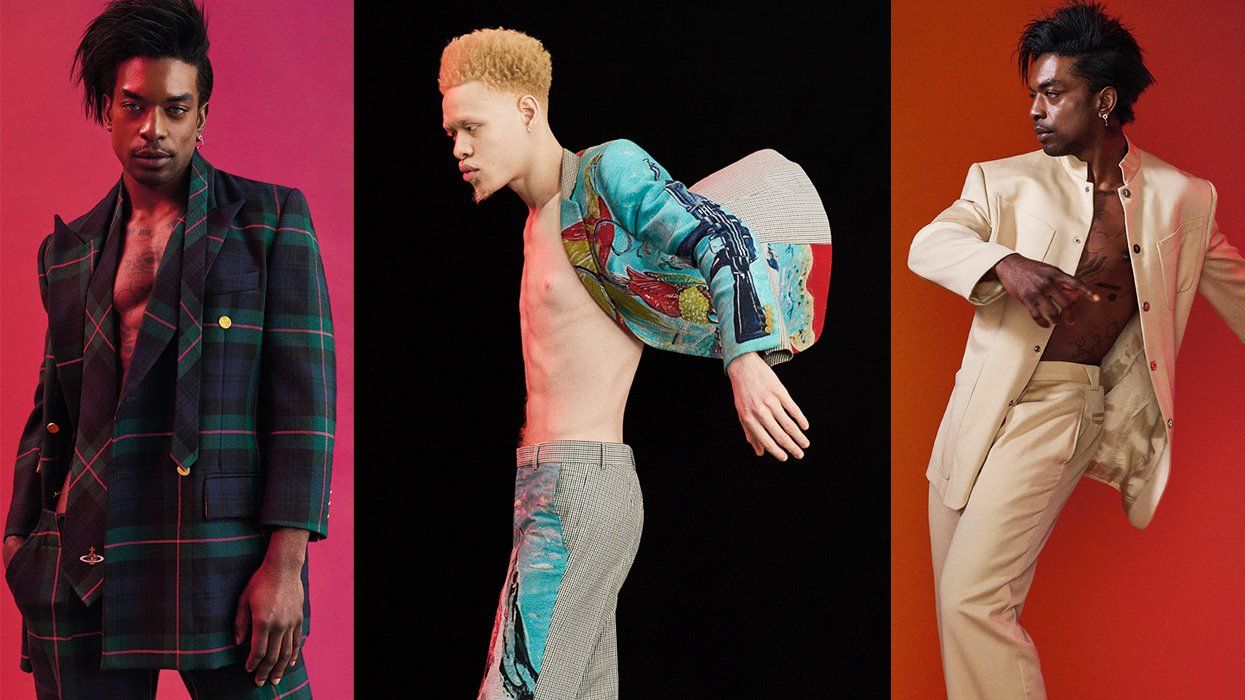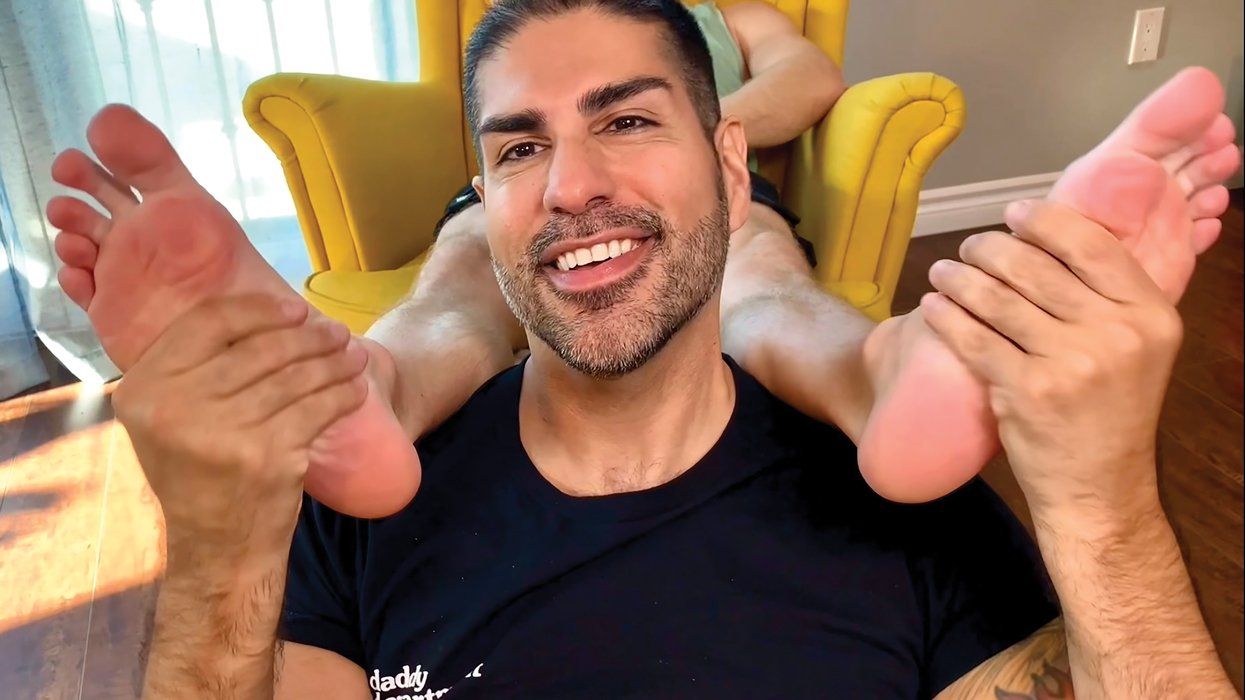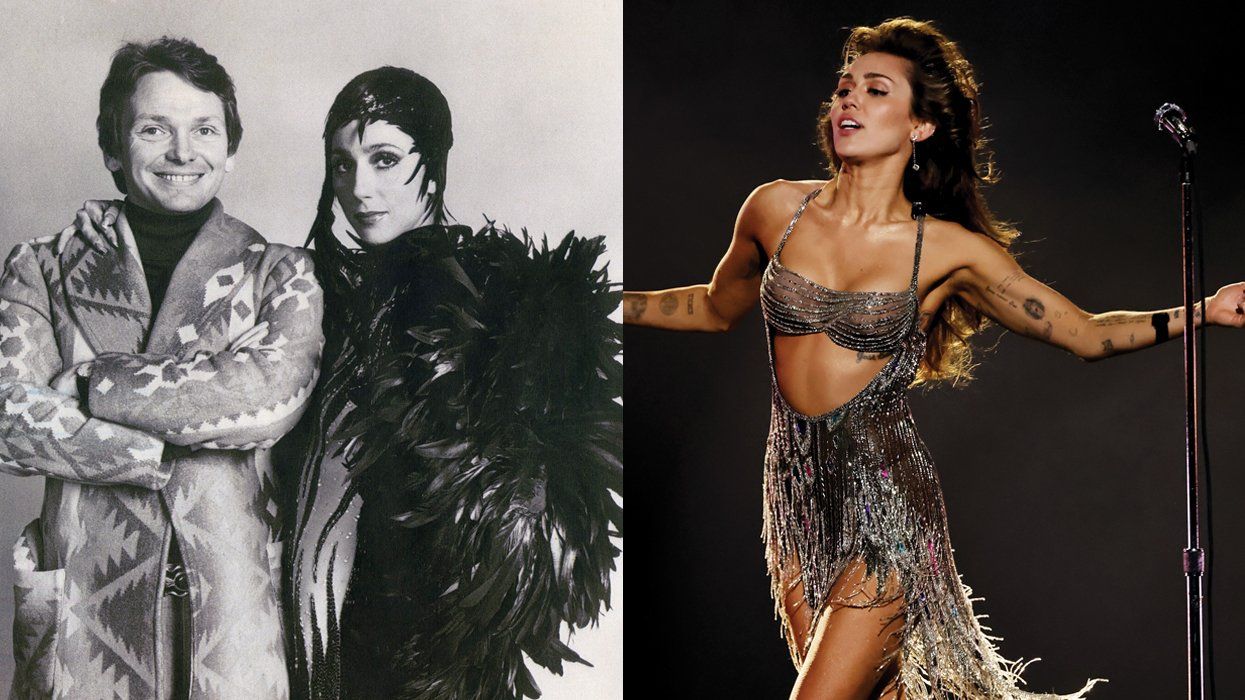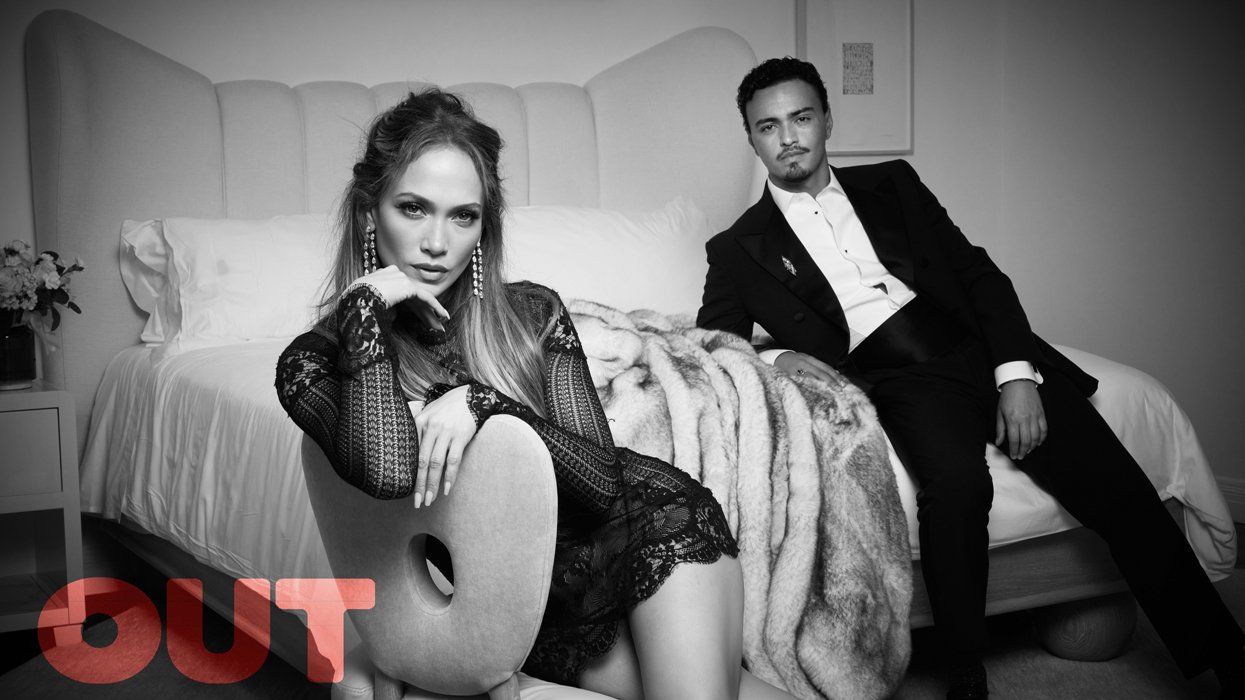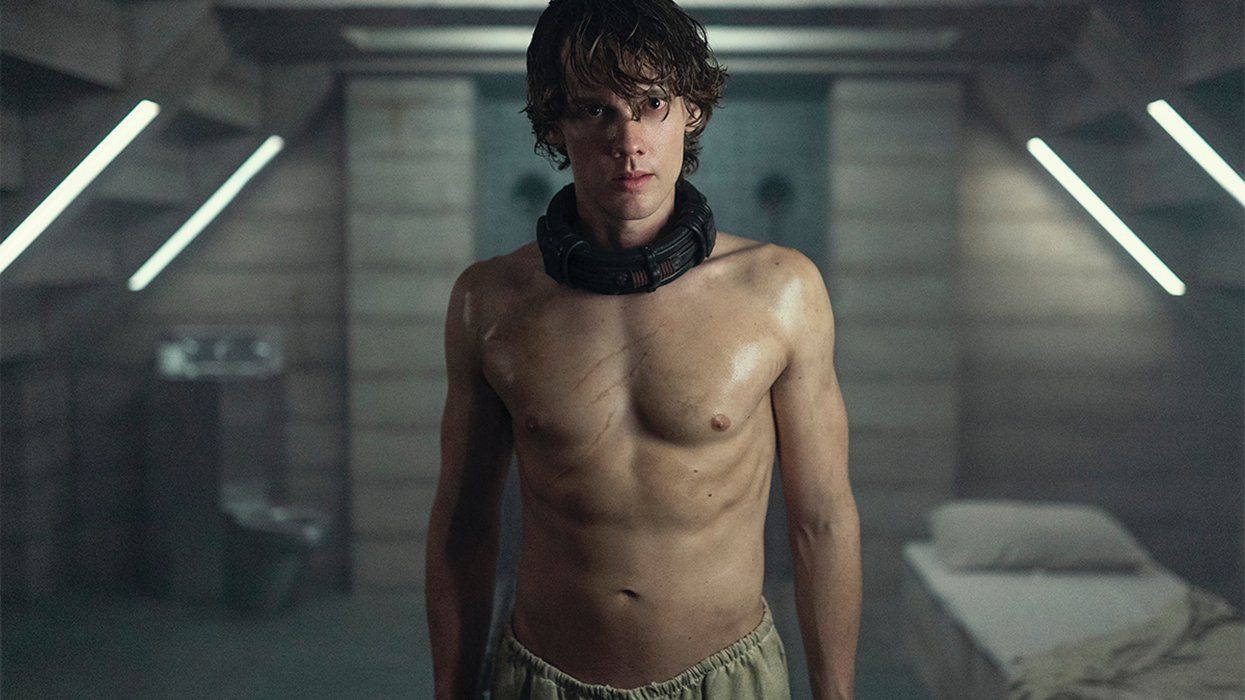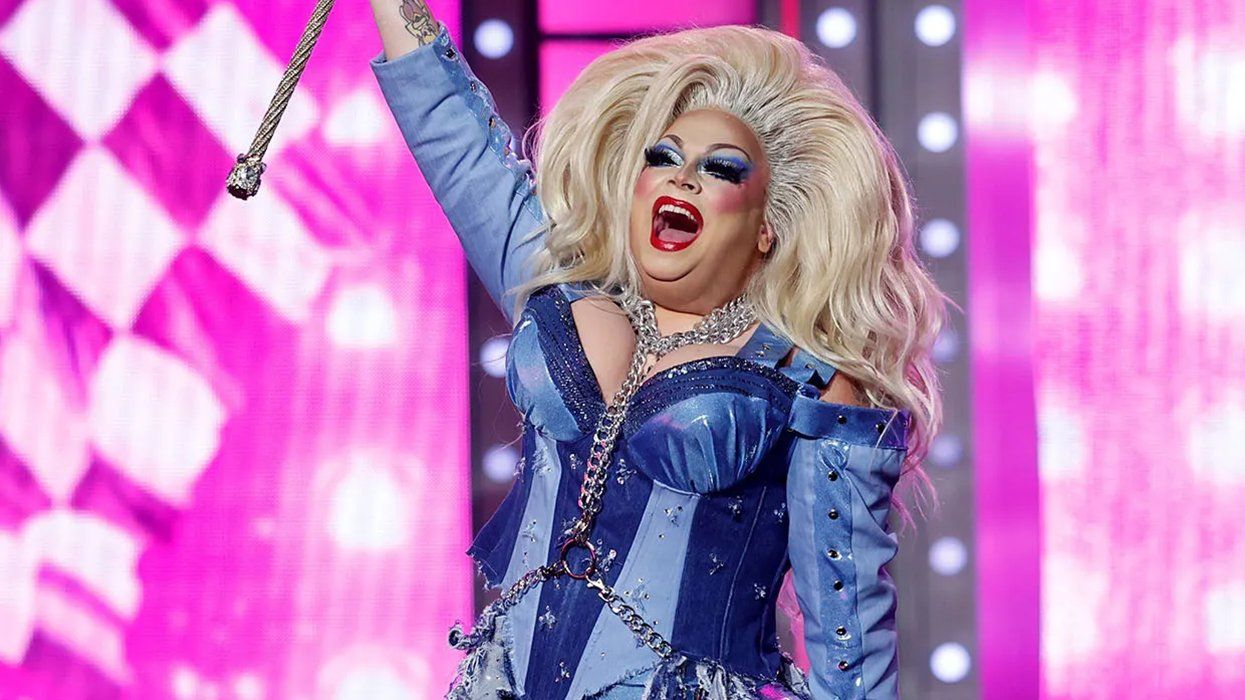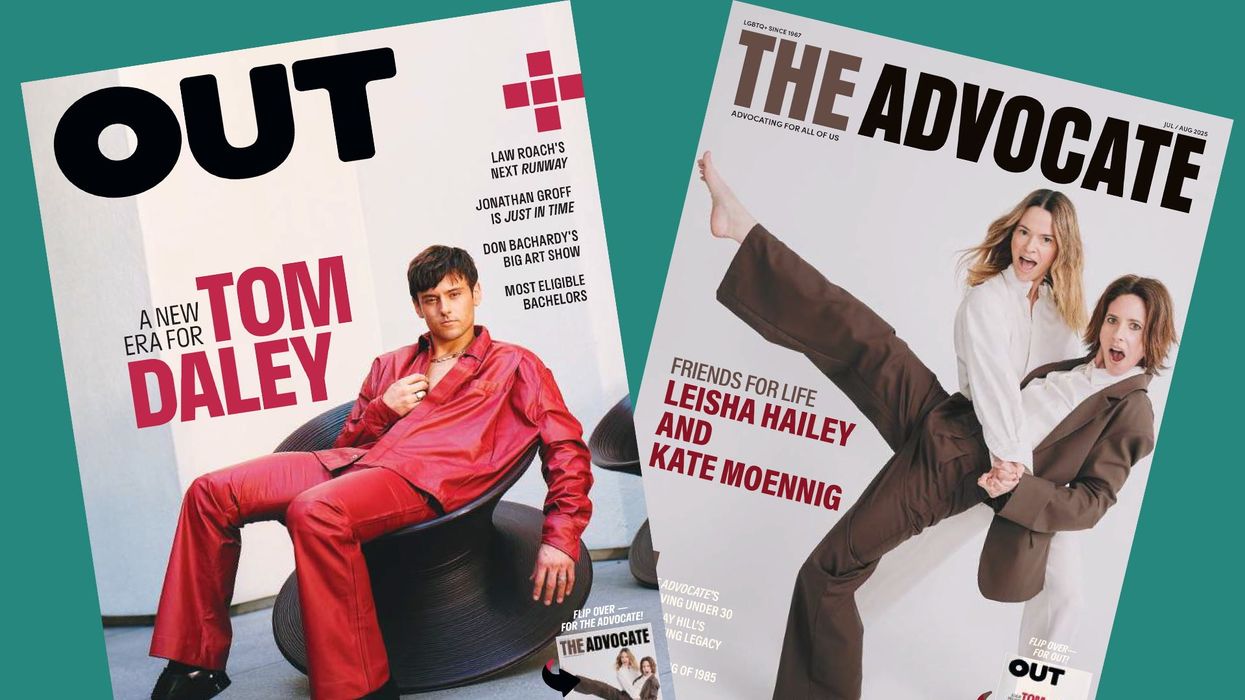"I always said, 'Think Gucci, and you'll get there eventually,'" says Julian Woodhouse, the 27-year-old founder and creative director of Wood House, a chic, rebellious menswear brand that was born overseas and is slowly infiltrating the American market. The adage is one that Woodhouse would say to his former collaborators (one of them a co-founder of the brand), who ultimately didn't take the venture seriously enough to truly usher it forward. "When you really believe in something, you push harder," Woodhouse says. "All of your princely attitudes go away, you're not a diva--you're the assistant, the intern, the CEO, and the manager, and you have to have that mentality in the beginning or it's not gonna go anywhere." This attitude, bolstered by a military-bred discipline and the fearlessness of Korean style, is what's allowed Woodhouse to show his clothes at the last three New York Fashion Week: Men's presentations; to secure solid financial backing; to launch an e-commerce with an international client base; and to position himself in a place where Gucci-sized goals, however lofty, don't seem unrealistic at all.
Related | Gallery: The Rise of Julian Woodhouse
But Woodhouse can't claim to have had this drive his whole life. An army brat, he was born in Germany to two military parents who were stationed there, and who were constantly moving the family. According to Woodhouse, the nomadic lifestyle, which would take him from Europe to the United States to Asia and back again, was mirrored by his childhood behavior, which was laced with artistry but was also erratic and not especially social. "I was active and energetic," he says, "but I was always in trouble at school because I was in my own world--creating something or painting murals, and not paying attention. It was hard for me to focus--I'd rather draw a mermaid. Because of that, I think I didn't have much interest in having friends. I'm an only child so I'm totally fine with being by myself." For reasons he can't quite place, Woodhouse kicked his ass into gear by the time he attended high school in Colorado, earning straight A's and forging his path to college. This was also, however, when his parents discovered he was gay, which, in his deeply religious and conservative black household, was met with disgust and serious physical abuse from his father. "To him, I'm an abomination," Woodhouse says. "To him, I'm gross--all of the worst things you can think of in a human."
Julian Woodhouse
Woodhouse's parents sent him to counseling--essentially conversion therapy--and, in a matter of speaking, it worked. "I'd convinced myself I was straight," Woodhouse says, "and I thought I was going to be straight my whole life." When he headed to the University of St. Thomas in Minnesota, where he'd study business and foreign languages, Woodhouse had a girlfriend and a seemingly strengthened family relationship. But what he'd endured still lingered inside somewhere, and when he joined the ROTC and started plotting his military career, it was apparently prompted less by a natural urge to follow his parents' paths than by a survival instinct to set up an escape route. After his senior year, Woodhouse was finally overcome with revelation and came out for good, and while some queer people might see the military as an intimidating refuge, Woodhouse saw it as salvation--a continuation of the safety he felt while living at college full time. "It was really the opposite of what many people think," Woodhouse says of his army goals as a gay man. "I would have gone to the edge of the earth to not live at home. It was horrible there. My dad's six-foot-five and a body-builder--he's huge and terrifying. I didn't want to be in that space."
As for where he'd be stationed, what fond memories Woodhouse did have of his youth involved experiences in South Korea, a place he'd always loved for its food, its vibrance, and its status as an up-and-coming cultural hub. Thanks to his stellar performance at St. Thomas, Woodhouse clinched his top pick, and after taking a short break and building a modest portfolio while working with a Minnesota stylist, the soldier who always had a taste for design wound up at Camp Casey in Dongducheon, a small city just north of Seoul. "When I got there, I just happened to be assigned to a unit with the most amazing, inclusive, and accepting boss I'll ever have," Woodhouse says, speaking of his commanding officer. "The first time he met me, he was like, 'You look like you like fashion.' I was wearing some crazy outfit and my [high] hair was almost out of regulation. He said, 'There's this thing called Seoul Fashion Week. You should check it out--I've got some friends that could get you in.'"
Kirill Kabachenko & Julian Woodhouse
Aided further by his portfolio and fashionable persona (he'd be rocking high-waisted pants, asymmetrical cuts and drapey androgynous looks), Woodhouse got in, indeed, and thanks to his unique partnership with his progressive boss, who'd help him split his time between military duty and stylish extracurriculars, he soon ingratiated himself deeper and deeper into the Seoul fashion scene. Even before he wound up modeling for international brands like Puma and New Balance, Woodhouse was getting swarmed by paparazzi who were simply drawn to his look, and who landed his face in the Korean versions of major magazines like GQ and Vogue. Things transpired quickly from there, with Woodhouse making connections with everyone from Naul, lead singer of the mega-popular boy band Brown Eyed Seoul, to a makeup artist who'd help him secure his first big styling gigs. Fashion show appearances became regular things, and at 25, with the help of a man named Steve Wilcox (one of the collaborators who'd later depart), Woodhouse was getting his own label off the ground, initially enlisting a rural pattern maker he'd met as a child and utilizing his business education and growing network of contacts. It was in the lead-up to his first Seoul runway show, at the end of 2015, that he'd meet Kirill Kabachenko, the Ukrainian model who'd later become his husband.
"We put out an open call for models on social media, and one of my friends sent me a message with his portfolio," Woodhouse says. "We booked him for a shoot, and I loved his energy, and then as he was getting his makeup taken off I saw him scrolling Grindr. I had no idea he was gay. We booked him in the show, and afterward he wrote me and said, 'You looked really cute today. Good job.' Two weeks later we went on a date." Per his modeling contract, Kabachenko was set to head to Malaysia after his Seoul stint wrapped, but he stayed behind to be with Woodhouse, crashing at Wilcox's house and in "love motels"--where young Korean sweethearts often go before leaving home to marry--as the relationship deepened. By early 2016, the couple managed to secure Kabachenko a refugee visa, and he and Woodhouse moved in together in a military-funded Seoul apartment, which would become the Wood House headquarters, and the place where Kabachenko, now 22, proposed. "One day, there were Post-It notes all over the walls of the parking garage," Woodhouse says, "with the words 'will you marry me' and hearts on them. Then they were all through the elevator. I was like, No, he didn't. I got off at the 25th floor--more Post-It notes. I opened the door, and before dinner, he just turned and proposed. And I was like, 'Of course.' I had been in and out of relationships with men and women, and I just wanted one person that I could call my own--and that they could call me their own. I didn't know if that was gonna happen for me. And then I found it."
Julian Woodhouse
At this point, Woodhouse had established his brand and supply chain in Seoul, and thanks to his far-reaching connections, he'd already shown his first collection, fall '16, at New York Fashion Week: Men's. When Woodhouse and Kabachenko returned to New York the following September, when the designer was invited back to present Spring '17, the pair were married (they moved to the city soon after). "That's when the [American] press really started to take note," says Woodhouse, who has since been featured everywhere from The New York Times and Women's Wear Daily to OUT. "They really started to take note of what we were doing with the brand stylistically." And, with Kabachenko on board as the face of Wood House and a huge contributor to the business side of things ("the managerial to my creative," Woodhouse says), what the brand is doing stylistically is shaking up one of the few arenas in which women have it better than men: fashion.
"It's the classic example of looking at an award show red carpet," Woodhouse says. "Men are always wearing tuxedos and women are always wearing anything they want. Womenswear has really been nurtured and developed, but men don't really have that flexibility. Wood House is nurturing the growth and development of menswear, because the existing structure we have now doesn't really support its progression. I remember working around straight, predominantly white men in the military, and after my modeling career started to get bigger, my soldiers would see me on billboards and start following me on Instagram. They'd come up to me and be like, 'How do you do that? We wanna dress like that.' All these straight guys from Tennessee or Mississippi--they showed me there's definitely a market [for clothes that don't conform]. Because men want to feel cool, and they want to look good. There's this whole thing about guys not giving a fuck about this stuff. But secretly they do give a fuck. They give a lot of fucks."
Julian Woodhouse
And the Wood House brand has a variety of styles to accommodate these wants. Now retired from the military, the designer says his first line was highly architectural; his second was almost entirely sportswear; and his most recent, a standout at January's fall '17 New York Men's Day presentation, leaned a bit toward the commercial side. But he says his only direction is to continue fostering the progression of menswear, and fervently evolving despite the tough hurdles of America's complacent men's market. This includes employing visual media that goes beyond lookbooks (like fashion films that can immediately connect with consumers), and landing potential backing from huge names that have shown interest. All of this is fueled by what Woodhouse has overcome, and the daring things he's seen during time spent in Seoul, where, on the streets, it's commonplace to see a straight man in bold clothes and makeup, even with his girlfriend on his arm. In the end, Wood House is a reflection of the man whose name it bears--an ensemble in and of himself.
"After I came out for the second time, I just accepted my sexuality as me," Woodhouse says. "I rarely think about my gayness just as I rarely think about my blackness. I think about it in weird and random ways, like if I'm wearing a look and I'm surrounded by predominantly straight, black men, or I'm holding hands with Kirill, who's white. But I'm at a point now where if I encounter someone that doesn't accept me, I don't really see them. They don't really exist in my world. It's not a vindictive, angry 'Fuck you;' I just literally don't see them. Because for me diversity is such a way of life. I think being black, being gay, being an American--it's all encompassing. You can't take anything away from that, or from me, because it's not a bunch of different, separate pieces. It is one solid thing."
Photography: Ruben Chamorro
Clothing: Wood House
Photographed on location at the Gilded Lily, New York
Special thanks: Lisle Richards


